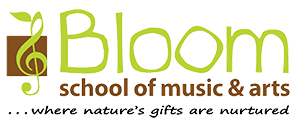Bollywood Bhangra
This week on 18 October, Hindus celebrate the triumph of good over evil and light over darkness in a colourful and boisterous annual event we call Deepavali. Homes of the celebrants are brightly lit with oil lamps and rangoli to usher in blessings of wealth. The streets of Little India are brightly lit and it is a treat for your senses; see the colourful overhead arches and glittering gold, feel the exquisitely embroidered saris, smell the sweet scents of jasmine flowers and Indian spices, indulge in teh tariks and roti pratas, and hear the upbeat music of Bollywood blasting from some shops. Even if you are not celebrating Diwali, you can still join in the festivities by visiting the annual bazaar in Little India to shop for traditional Indian clothes and accessories or unique decorative items, or get yourself an intricately designed henna art for your hands.
This public holiday, there is a host of other events happening in conjunction with Deepavali which you can check out.
I grew up watching Bollywood movies (my first being Dilwale Dulhania Le Jayenge, starring Bollywood icon Shahrukh Khan), and I always get excited during their lengthy songs, because of the vibrant colours, catchy tunes, animated dances and the thrilling drum beats. In line with this Indian theme, let’s learn about Bhangra!
Bhangra is both music and dance originating from the Punjab region of India and Pakistan. Bhangra has come a long way from its humble beginnings as a celebratory folk dance to welcome the coming of Spring (Vaisakhi), and now it is recognised and enjoyed all over the world. Bhangra is more than just a musical genre; it is also an expression of passion and the Punjabi culture and identity. Bhangra has now evolved to include fusions with other genres of music such as Bollywood Hindi music, Western pop, hip hop and even reggae. Here’s an example of such a mash-up:
In Bhangra music, the dhol sets the dance rhythm with a loud bass beat. The dhol is slung over the neck of the player with a strap, and the player hits this large traditional North Indian double-sided drum with cane sticks (the dagga, which is bent in a quarter-circular arc on the end that strikes the instrument, for the bass part of the dhol, and the tihli for the treble). The dhol is usually accompanied by music or other instruments such as the tabla, but it can sound good even on its own.
As a dance, Bhangra is a rousing movement typically of the arms and shoulders. Its motions resemble that of domestic chores such as ‘change the light bulb’, ‘clap your hands’, ‘mop the floor, and wipe the window’. These layman terms are used in mini tutorials, sometimes during a Punjabi wedding sabotage.
Some Bhangra choreography, especially by professional troupes, includes the use of props such as sticks or swords, and stunts such as swinging another dancer.
Bhangra can be very compelling to watch as it makes you want to get up and move along as well! So here’s a video to end off this post. Let’s dance!
From all of us at Bloom School of Music & Arts, here’s wishing everyone a healthy and wealthy Deepavali!












